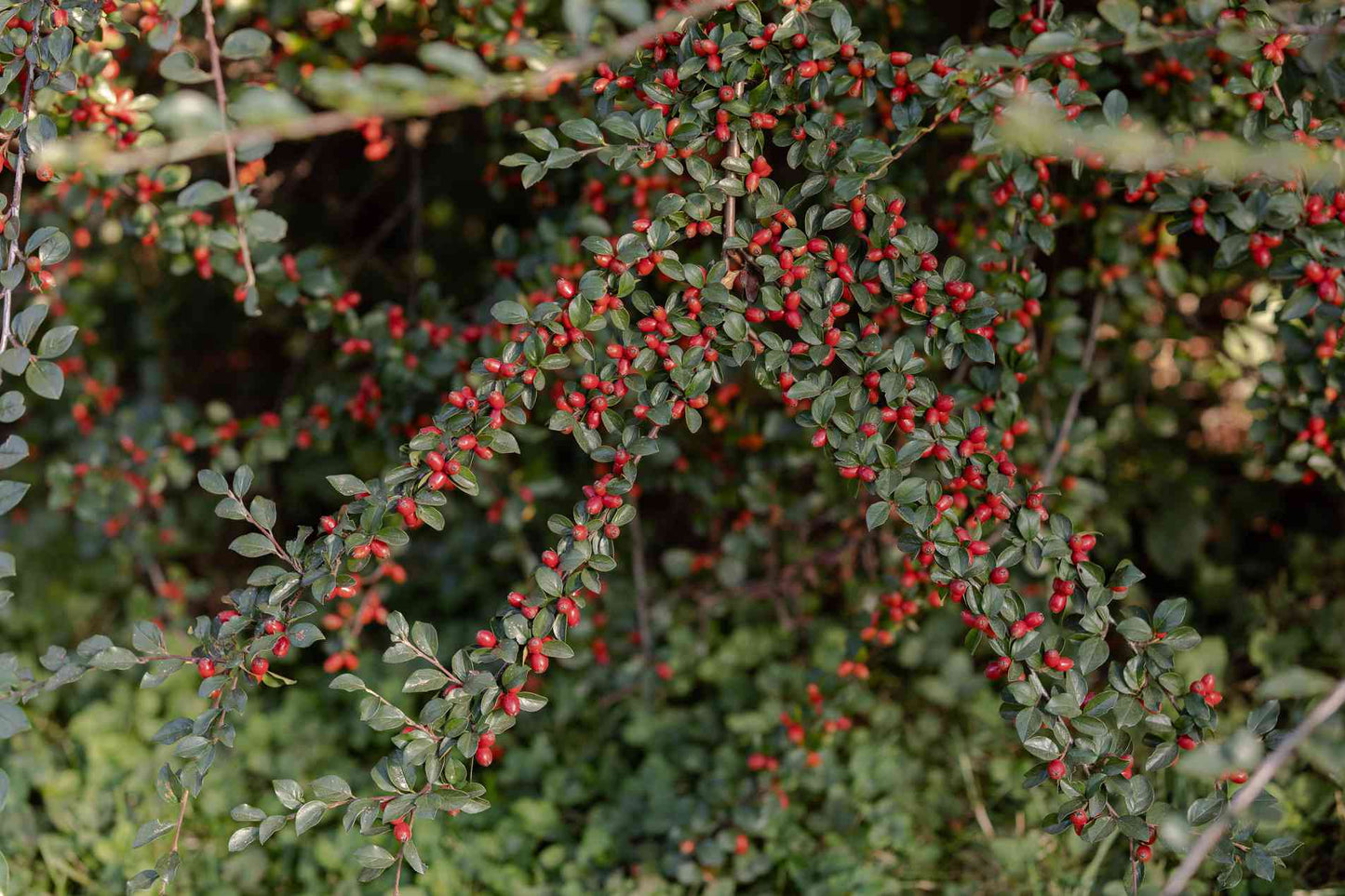Riverdene Garden Center
Cotoneaster
Cotoneaster
Couldn't load pickup availability
Cotoneaster spp.
Cotoneaster is a cold-hardy, drought-tolerant, and low-maintenance deciduous or evergreen shrub known for its dense growth, attractive foliage, small berries, and spreading habit. It is commonly used for hedges, ground cover, erosion control, and wildlife-friendly gardens. The plant produces tiny white or pink flowers in spring, followed by red or black berries in fall, which attract birds. Cotoneaster thrives in prairie climates, making it an excellent choice for Southwest Saskatchewan landscapes.
Planting & Growing Conditions
- Hardiness Zone: 3-7 (highly cold-hardy, suitable for harsh winters)
-
Mature Size:
- Spreading/Ground Cover Varieties: 1-3 feet tall, spreading 3-6 feet wide
- Upright/Hedge Varieties: 4-10 feet tall and wide
- Growth Rate: Moderate to fast
- Sunlight Needs: Full sun to partial shade (best growth and berry production in 6+ hours of direct sun)
-
Soil Requirements:
- Prefers well-drained, sandy or loamy soil
- Tolerates clay and rocky soils if drainage is adequate
- Avoid overly wet conditions, as soggy soil can cause root rot
-
Spacing:
- Hedges: 3-5 feet apart
- Ground Cover: 4-6 feet apart for quick spreading
Watering & Maintenance
-
Young Plants (First Year):
- Water deeply 1-2 times per week to establish roots
-
Established Shrubs:
- Very drought-tolerant but benefits from occasional deep watering during prolonged dry spells
- Avoid overwatering, as Cotoneaster prefers moderate soil moisture
Fertilizing
- First Year: No fertilizer needed—focus on root establishment
-
Mature Shrubs:
- Apply a balanced slow-release fertilizer (e.g., 10-10-10) in early spring
- Organic alternative: Compost or well-rotted manure in spring
- Avoid excessive nitrogen, which promotes excessive leafy growth over flowers and berries
Pruning & Maintenance
- Best Time to Prune: Late winter to early spring, before new growth starts
-
How to Prune:
- Remove dead or damaged branches to maintain health
- Lightly shape hedge varieties to maintain a formal appearance
- Ground cover varieties require minimal pruning, but you can trim back runners to control spread
- Every few years, rejuvenate overgrown plants by cutting back up to one-third of the oldest stems
Flowers, Foliage & Seasonal Interest
- Bloom Time: Late spring to early summer (May-June)
- Flower Color: Small white or pink flowers (attracts pollinators)
-
Fruit:
- Bright red, orange, or black berries in late summer to fall
- Berries are NOT edible for humans but are loved by birds
-
Foliage:
- Spring & Summer: Glossy dark green leaves
- Fall: Leaves turn yellow, orange, or red (depending on variety)
- Winter: Evergreen varieties retain leaves; deciduous types drop leaves
Pest & Disease Management
Resistant to: Drought, deer, urban pollution, and most pests
Common Pests:
-
Aphids – Can cause leaf curling and sticky residue
- Solution: Spray with insecticidal soap or introduce ladybugs
-
Spider Mites – Can cause leaf discoloration in hot, dry conditions
- Solution: Hose off with water or use insecticidal soap
Common Diseases:
-
Fire Blight – Causes blackened, shriveled branches
- Solution: Prune infected areas and dispose of cuttings; apply copper fungicide if needed
-
Leaf Spot (Fungal or Bacterial) – Brown spots on foliage
- Solution: Improve airflow, remove infected leaves, and avoid overhead watering
Winter Protection
- Very winter-hardy—no special protection needed in Zone 3+
-
Mulching:
- Apply 2-3 inches of mulch around the base to insulate roots and retain moisture
- Pruning in fall is not necessary—cutting too late may reduce next year’s berry production
Landscape Uses
Perfect for hedges, windbreaks, and borders
Ground cover varieties are great for erosion control on slopes
Attracts birds with its berries
Tolerates urban conditions and pollution
Low-maintenance and adaptable
Additional Notes:
- Cotoneaster is an excellent multi-season plant, offering spring flowers, fall berries, and year-round structure
- Lifespan: 20+ years with proper care
- Works well in traditional, low-maintenance, and wildlife-friendly gardens
Photo courtesy of The Spruce
Share


